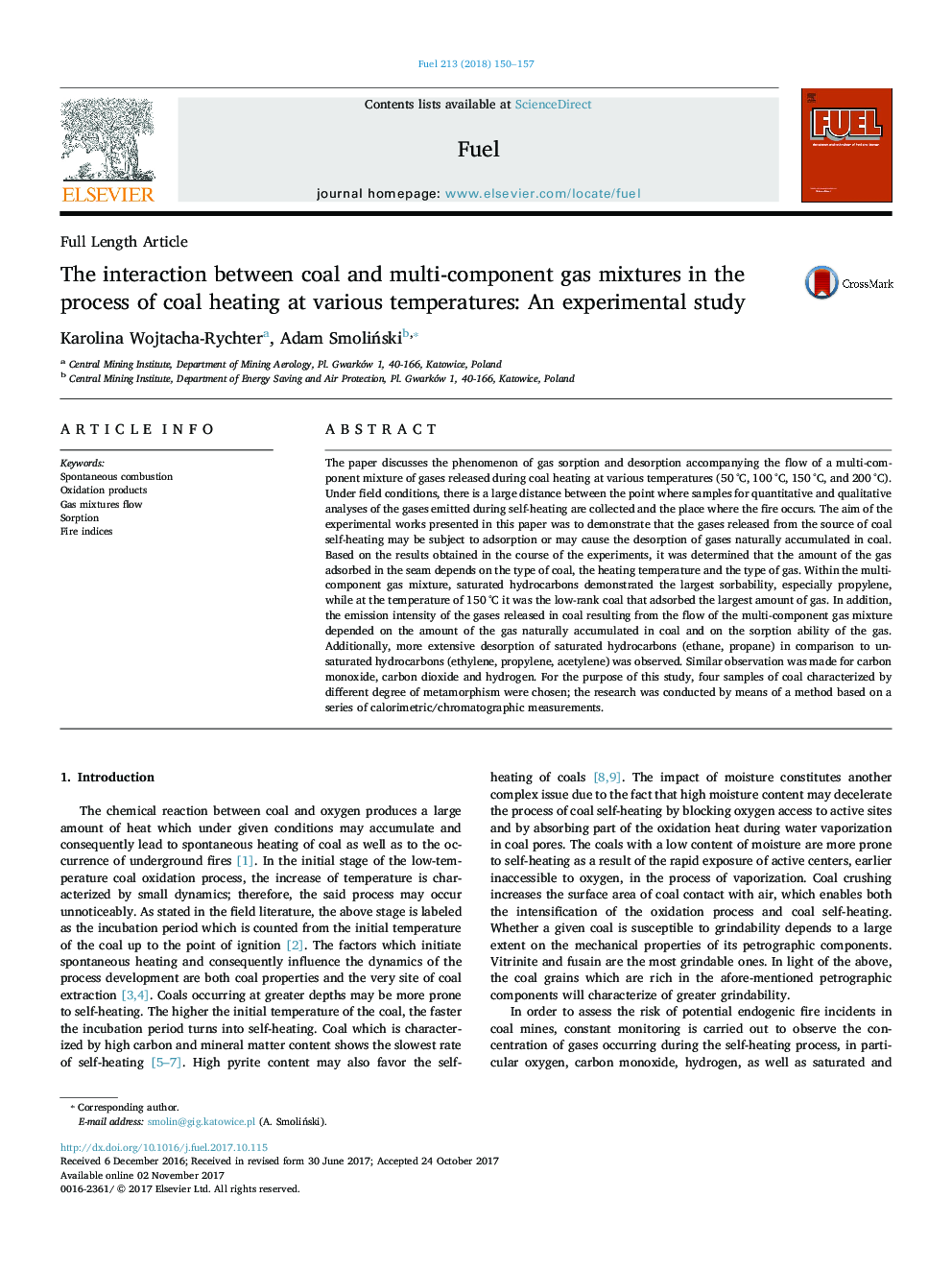| Article ID | Journal | Published Year | Pages | File Type |
|---|---|---|---|---|
| 6632563 | Fuel | 2018 | 8 Pages |
Abstract
The paper discusses the phenomenon of gas sorption and desorption accompanying the flow of a multi-component mixture of gases released during coal heating at various temperatures (50â¯Â°C, 100â¯Â°C, 150â¯Â°C, and 200â¯Â°C). Under field conditions, there is a large distance between the point where samples for quantitative and qualitative analyses of the gases emitted during self-heating are collected and the place where the fire occurs. The aim of the experimental works presented in this paper was to demonstrate that the gases released from the source of coal self-heating may be subject to adsorption or may cause the desorption of gases naturally accumulated in coal. Based on the results obtained in the course of the experiments, it was determined that the amount of the gas adsorbed in the seam depends on the type of coal, the heating temperature and the type of gas. Within the multi-component gas mixture, saturated hydrocarbons demonstrated the largest sorbability, especially propylene, while at the temperature of 150â¯Â°C it was the low-rank coal that adsorbed the largest amount of gas. In addition, the emission intensity of the gases released in coal resulting from the flow of the multi-component gas mixture depended on the amount of the gas naturally accumulated in coal and on the sorption ability of the gas. Additionally, more extensive desorption of saturated hydrocarbons (ethane, propane) in comparison to unsaturated hydrocarbons (ethylene, propylene, acetylene) was observed. Similar observation was made for carbon monoxide, carbon dioxide and hydrogen. For the purpose of this study, four samples of coal characterized by different degree of metamorphism were chosen; the research was conducted by means of a method based on a series of calorimetric/chromatographic measurements.
Related Topics
Physical Sciences and Engineering
Chemical Engineering
Chemical Engineering (General)
Authors
Karolina Wojtacha-Rychter, Adam SmoliÅski,
